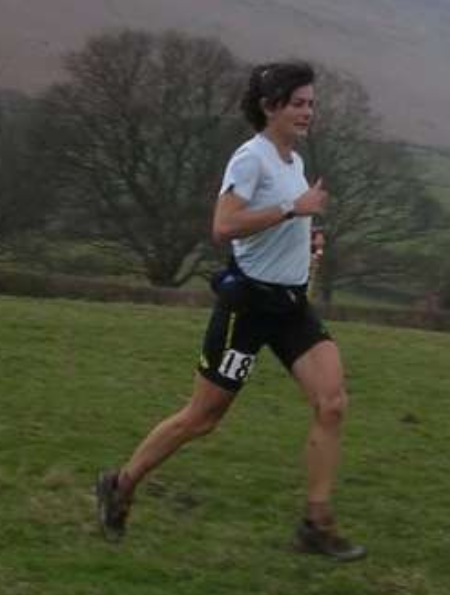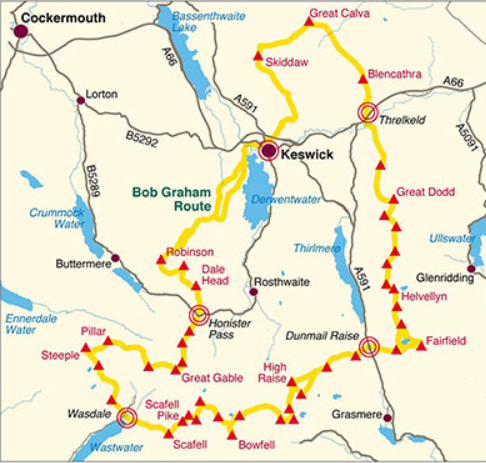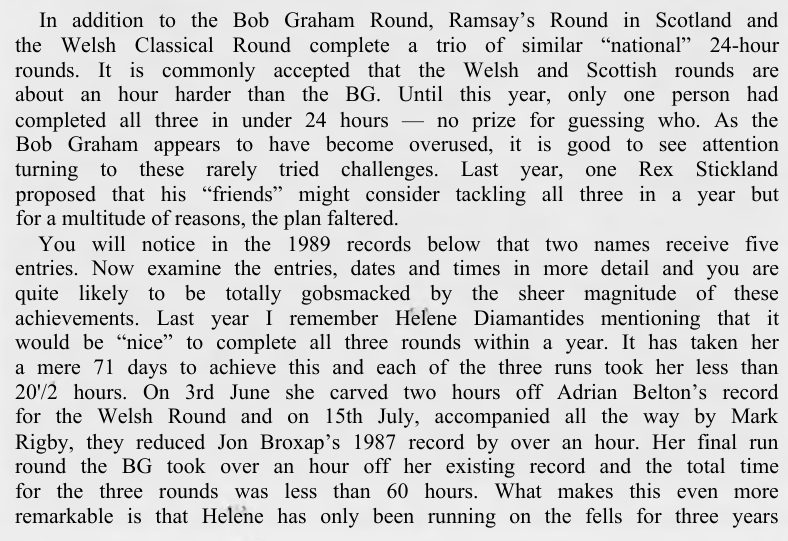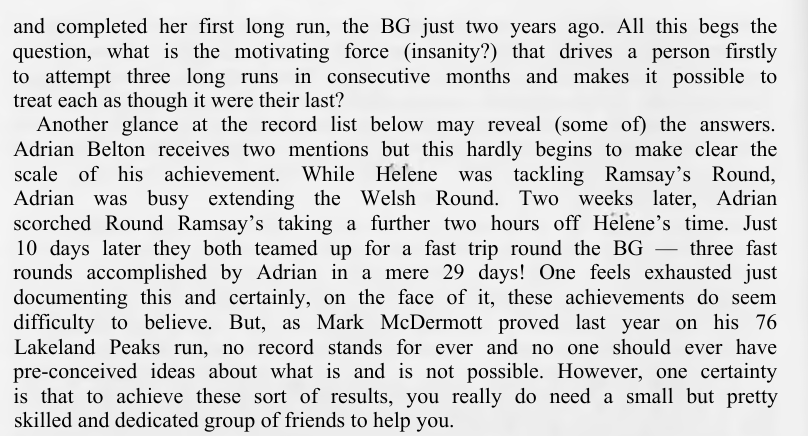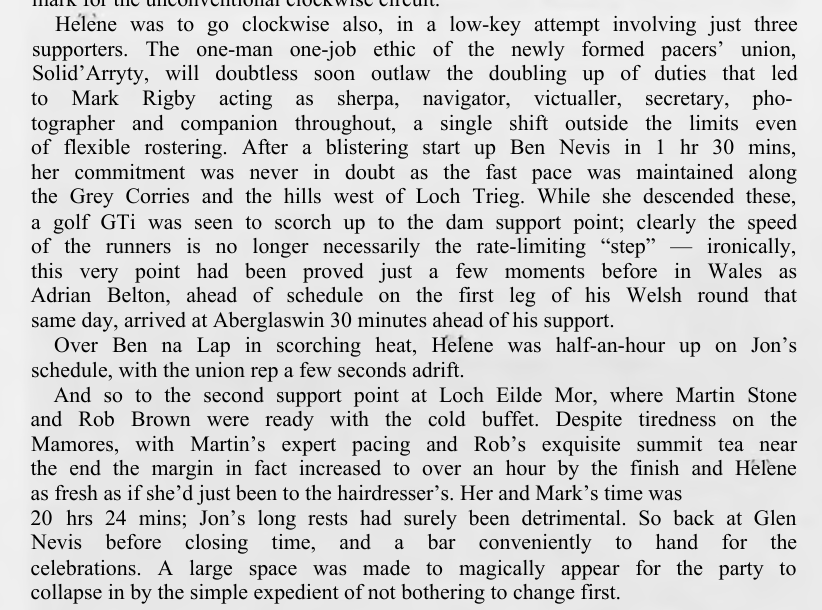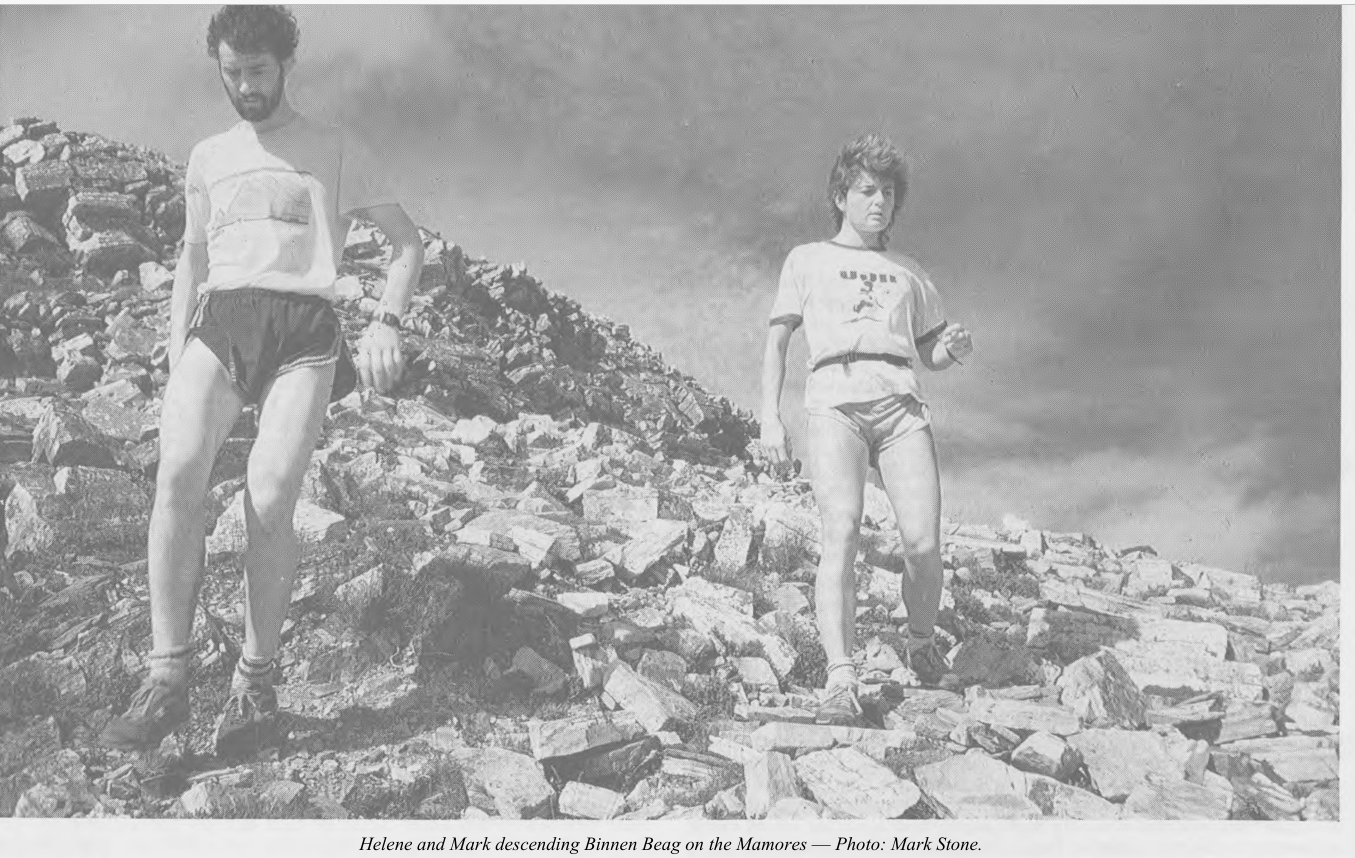Hill runners have various challenges, as opposed to races, which they take on when they feel confident enough. Among these challenges are the various ‘Rounds’ . All countries where the sport is practised have their own. The best known Scottish one is the Ramsay Round which starts and finishes at the Glen Nevis Youth Hostel and covers 23 Munroes with the challenge being to do them all in a single day. Helene tackled several rounds but the first was in 1987 Diamantides when completed her first Bob Graham Round: to run 66 miles (106 km) over 42 Lake District peaks within 24 hours.
Later that year she and former Durham University team mate fell-runner Alison Wright went to India. to Nepal where they were to attempt to break the record for running from Everest Base Camp to Kathmandu. This is a 188-mile (303 km) route which includes 32,000 feet of ascent and 46,000 feet of descent. Both women completed the route in a record of 3 days, 10 hours (which included 8 hours of sleep. This beat the Sherpa record by 12 hours. Read that last sentence again: beat the Sherpa record by 12 hours.
Mission accomplished for 1987. In 1988 Diamantides won both the women’s events in the 31 km Mount Cameroon race and the Mount Kinabalu race in Borneo; and she came third in the 100-mile (160 km) Hogger ‘Super Marathon’ in Algeria.
Then, in 1989, during the summer she ran the three classics – Charlie Ramsay Round (Lochaber in 20 hours 24 minutes), Bob Graham Round (Lake District in 20 hours 17 minutes) and Paddy Buckley Round (Snowdon in 20 hours 08 minutes, breaking the men’s record by two hours – yes read that last but again – beating the men’s record by two hours!) and became the first person to do all three rounds in the same year. Adrian Belton also did them that year accompanying Helene on the Welsh round. For each of these she set a new record and was named Long Distance Fell Runner of the Year by the Fell Running Association. In 1989 she reduced the Bob Graham record to 19 hours 11 minutes which lasted for two years before Anne Stentiford took it down to 18 hours 49 minutes.
That’s an amazing series of feats by any standards but what was it that led her in that direction? Steve Chilton’s “It’s a Hill, Get Over It” tells us something about it. She did a slow BGR after about a year of fell running because that was what people did. She didn’t realise that it was an unusual thing to do.”
Then I did a solo unsupported round because no woman had got around in under 24 hours which I thought was unforgiveable. I didn’t realise at the time that it was the fastest female time when I completed. I was pretty tired and uncomfortable. Going from training to the BGR, yes you are going to beat yourself up, but you have the muscle memory and the systems are used to doing it. My knees weren’t great at the end of these events.”
The September 1989 issue of “The Fellrunner” has an article in The Three 24 hour rounds which says:
Praise from an experienced fell runner and note that she competed all three rounds in 71 days. The same issue was more specific on how she tacled all three. This description is of the Ramsay Round
For these feats, Helene shared the Fell Runners Association Long Distance Trophy. with Mike Hartley for his Pennine Way record. The three rounds in 71 days was a quite amazing feat of endurance and application.
